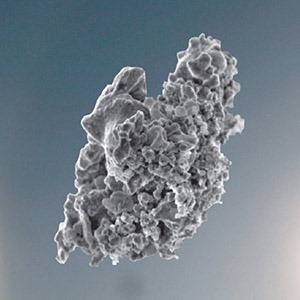Where does the dust come from?

Where does the dust come from? Natural question after overhaul. After all, do not try, very little time passes, and again we notice the omnipresent dust in our places. Is cleaning an illusion? Not certainly in that way! Cleaning is an effective way to reduce the amount of dust in the apartment, but it is simply impossible to defeat it 100%. What is so special about it, what it consists of and where it comes from?
to contents ↑What is dust and where does it come from?
Dust is very small particles that are simply impossible to discern with the naked eye. After all, their sizes are only from 0.005 to 0.1 mm.
Where does the dust come from?
70% of all dust on the planet of natural origin, 30% is a product of human life. But it is these 30% that are most harmful - both for the human body and for our planet as a whole.
Priming
 The largest natural source of dust is the soil of the Earth. With the help of the wind, small particles of soil are blown out and moved over long distances.
The largest natural source of dust is the soil of the Earth. With the help of the wind, small particles of soil are blown out and moved over long distances.
Ponds
The salts of the oceans and seas are also dust particles. Salt water when dried in the air leaves grains of salt, which are also transported far away from their “home” with the help of the wind.
Deserts and mountains
Volcanoes, deserts and forest fires also make a significant contribution to the creation of dust.
Interesting fact: The Japanese volcano of Sukarajima annually releases about 14 million tons of dust into the atmosphere. Each year, thanks to the Sahara desert, the mountains of Central America are covered by 60 to 200 million tons of dust. This dust also reaches our country and is probably now in your apartment.
Space
Cosmic dust is not the invention of filmmakers. This is the reality that comes to Earth during meteor showers.
Plants
Pollen of flowers, animal hair, spores and fungi are all part of the dust.
Person
A person’s share in dust production consists mainly of burnt particles of oil, coal, wood and gas. Industrial enterprises, automobile tires and construction sites are also a kind of “factory” of dust.
to contents ↑An interesting fact: for 1 year in each average two-room apartment, about 30 kg of dust accumulates.
Where does the dust come from in the house?
All the dust is constantly in motion and thus seeps into our housing. Its particles larger than 10 microns quickly settle on the surface of objects and the floor, and we can easily remove them with a damp cloth.
The most dangerous for humans are dust particles that are less than 5 microns in size. We cannot see them, and they settle on the surface for a very long time, due to their low weight. It is these particles that most easily penetrate into our body through the respiratory tract.
An interesting fact: every day a resident of the city inhales one third of a glass of dust.
Composition of house dust
Household dust consists of 35% of mineral particles, 12% of paper and textile fibers, 19% of our skin flakes, 7% of flower pollen, 3% of smoke and soot particles, 24% of particles of unknown origin. Knowing this, it is easy enough to understand where the dust comes from in the house?
Organic dust is not as dangerous for apartment residents as a mixture of mineral particles. The source of the latter species may be mineral wool, or glass wool, which insulated the walls of some houses.Air, seeping through walls and holes from self-tapping screws, carries dangerous particles that can permanently settle in your lungs. In many civilized countries, these heaters are considered one of the causes of cancer.
An interesting fact: in the dust of smoking rooms, scientists discovered the chemical element cadmium, which is very toxic and dangerous to human life.
Another component of house dust is ticks. By themselves, they do not pose a danger to humans - they are not carriers of infectious diseases and parasite eggs. Saprophytes (the scientific name for dust mites) feed on particles of dead skin and are thus useful in their own way.
Interesting fact: approximately 3 saprophytes will fit at the point at the end of this sentence.
But the waste products they emit are not so safe. Ticks live about 4 months. During this time, each of them lays up to 300 eggs and leaves excrement 200 times its own weight. These particles are very small in size, so they do not settle for a long time and are in the air that we breathe. For people prone to allergies, this is especially dangerous.
to contents ↑Interesting fact: 25% of all types of allergies and 50% of asthmatic diseases cause dust mites waste products.
Where does the dust come from in an apartment where no one lives?
Even if there are no tenants in the apartment, dust will still appear in it over time. This is a normal phenomenon, because there is still air in the room, which means microparticles, which will eventually settle on the surface of objects.
to contents ↑Is a vacuum cleaner an enemy of dust or its ally?
 Even judging by the name of this household appliance, the vacuum cleaner was created to “absorb” dust into itself. However, it does not always work out exactly as we imagine this process. It all depends on the filter status of your equipment.
Even judging by the name of this household appliance, the vacuum cleaner was created to “absorb” dust into itself. However, it does not always work out exactly as we imagine this process. It all depends on the filter status of your equipment.
After vacuuming in the air of the apartment remains a specific unpleasant odor? Or does the vacuum cleaner crash during cleaning? These are signals that it is worth replacing (cleaning) the filter in the device. If you do not, then the cleaning effect is as follows: the vacuum cleaner collected dust from the surface of the carpets and floor and threw it back into the air in the apartment. Such cleaning is not only not useful, but even harmful.
to contents ↑Is dust always harmful?
Despite all the negative qualities of dust, it has a huge positive value in our lives. If not for these microscopic particles, then life on the planet would be impossible. On dust particles that move freely in the atmosphere, water pores condense - this is how rain and snow clouds form. In turn, thanks to them, we have water circulation around the globe.
to contents ↑Useful tips on how to protect your home from dust:
- Use only safe, modern materials when warming the house.
- Remove all carpets in the house, especially if they still hang on your walls.
- Minimize the number of soft toys.
- Refuse to buy or throw away the carpet already existing in the house - this material is the largest dust collector from which it is most difficult to remove such a coating.
- Replace heavy fabric curtains with lighter ones, or with blinds that are easy to wash.
- If possible, do not buy upholstered furniture with fabric upholstery. Leather upholstery is better and safer. It is not a good "parking" for dust, and it can easily be removed from there.
- Use an air purifier.
- Wash and change filters in a vacuum cleaner on time.
- Grow home plants, they help to bind dust. The more plants in your home, the cleaner the air you breathe.
- All books and small items are best stored on shelves behind glass.
- Monitor the state of foam rubber furniture and change it in time. After all, after 10 years of service, foam rubber begins to decay and release very harmful substances that are in the air and settle on the surfaces of the room.
- It is advisable to wet the house daily.
- In no case do not use a feather panicle to brush off the dust, you just sweep it away for a while and by no means remove it.
Stock footage
As you already understood, it will not be possible to completely remove the dust from your life, but reducing the amount of it in your house to a minimum is a very real task. Remember that having started a thorough struggle, you maintain your health!
- How to choose a vacuum cleaner taking into account the characteristics of the house and coatings?
- What to look for when choosing a water delivery
- How to quickly create comfort at home - tips for housewives
- How to choose the perfect TV - useful tips
- What to look for when choosing blinds
- What should be running shoes?
- What useful things can you buy in a hardware store
- Iphone 11 pro max review
- Than iPhone is better than Android smartphones



